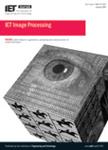版权所有:内蒙古大学图书馆 技术提供:维普资讯• 智图
内蒙古自治区呼和浩特市赛罕区大学西街235号 邮编: 010021

作者机构:Vignans Fdn Sci Technol & Res Dept Elect & Commun Engn Guntur 522213 Andhra Pradesh India
出 版 物:《IET IMAGE PROCESSING》 (IET影像处理)
年 卷 期:2020年第14卷第17期
页 面:4736-4743页
核心收录:
学科分类:0808[工学-电气工程] 1002[医学-临床医学] 08[工学] 0812[工学-计算机科学与技术(可授工学、理学学位)]
主 题:image classification image enhancement learning (artificial intelligence) neural nets image reconstruction estimation theory end to end system hazy image classification deep learning network outdoor images autonomous vehicles geo-mapping manmade extreme atmospheric conditions autonomous vehicle navigation ground truth image transmission map estimation depth map MCP-based image dehazing deep neural network-based identification MCP-based dehazing network image reconstruction mean channel prior air-light TensorFlow platform peak-signal-to-noise ratio structural similarity index
摘 要:Outdoor images are having several applications including autonomous vehicles, geo-mapping, and surveillance. It is a common phenomenon that the images captured outdoor are prone to noise, which arises due to natural and manmade extreme atmospheric conditions such as haze, fog, and smog. Importantly in autonomous vehicle navigation, it is very important to recover the ground truth image to get the better decision by the system. Estimation of the transmission map and air-light is very crucial in recovering the ground truth image. In this study, the authors proposed a new method to estimate the transmission map based on a mean channel prior (MCP), which represents the depth map to estimate the transmission map. The authors proposed a deep neural network to identify the hazy image for the further dehazing process. In this study, the authors presented, two novel contributions, first an MCP-based image dehazing and second, a deep neural network-based identification of hazy images as a pre-processing block in the proposed end to end system. The proposed deep learning network using the TensorFlow platform provided validation accuracy of 93.4% for hazy image classification. Finally, the proposed MCP-based dehazing network showed better performance in terms of peak-signal-to-noise ratio, structural similarity index, and computational time than that of existing methods.